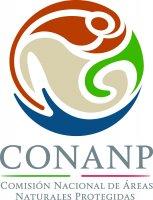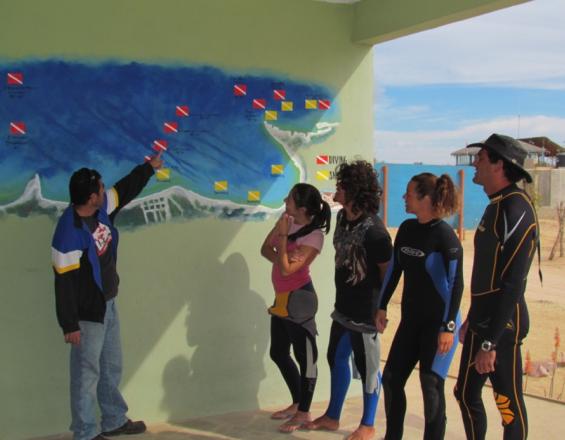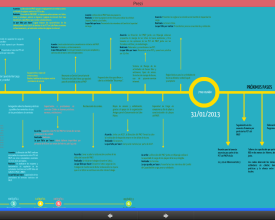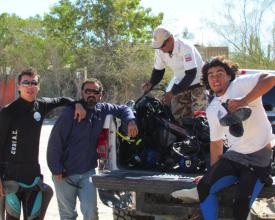
Tourism as a driver for change
Full Solution

Cabo Pulmo’s dive operators educate divers about the reef
CONANP archive
The Public Use and Recreation Program (PURP) addresses the problem of destructive recreational activities in Cabo Pulmo National Park. The Program provides guidelines to local tour operators to reduce negative impacts of tourism activities on the Parks’ habitats and ensures their economic sustainability. As a result limits on water sports practiced in the Park are set, which dramatically reduces the impacts on the reefs resulting from these activities.
Last update: 30 Sep 2020
4203 Views
Context
Challenges addressed
increasing pressures on Cabo Pulmo National Park from growing tourism sector
-Tourism activities within Cabo Pulmo National Park are expected to significantly increase
-Mitigate the effects from increased visitation by organizing tourism activities in the Park through the Public Use and Recreation Program (PURP)
-In order to avoid negative impacts on the reef, the increase of visitors must be effectively regulated through tourist operators and permanent surveillance and monitoring
Location
Mexico
Central America
Process
Summary of the process
Inclusion of the tourist operators in monitoring task is fundamental to ensure adaptive management actions. Monitoring allows taking decisions about the use of the park, implement restorations actions, and help to build capacities among the tourist operators. Thus, this BB is transversal throughout the project, and represents a key for the success of responsible use and conservation objectives. Also, the monitoring connects the people of the community (including tourist operators, dive guides, individuals, students, volunteers) with the direction the MPA is developing, creating an excellent channel to communicate the “state” of the park, and the adoptions of the regulations.
Building Blocks
Determination of the carrying capacity
The collection of technical data to assess the carrying-capacity is needed to start a participatory process with the tourism operators. This data was important to convince the local operators on the potential impacts of recreational activities and to convince them on maintaining a low use level on the reef and promote a high quality service for the tourists. Creating a joint understanding of potential impacts of recreational marine activities thus includes participatory meetings with local tourism operators to explain impacts of intensive recreational activities and the threats these implement on their livelihoods in order to develop the planning process.
Enabling factors
- Economic and technical support by NGOs, the academic community and tourism operators for the carrying-capacity study
- Good timing and acceptance by local community to develop public use program due to threats of developing a mega-tourism project in the area
Lesson learned
- Open-participation, important to invite all stakeholders involved.
- Expert facilitation of the participatory process to avoid conflicts with authority and ensure respect and appropriation of the program
Local stakeholder engagement
Local ownership of the public use program is achieved through extensive participation including consultations, meetings, building agreements as well as “extracting” local experience and knowledge. Support for monitoring from the local community is essential throughout the whole process of developing the Public Use and Recreation Program (PURP) as a view to ensure its acceptance and implementation by local tourism operators.
Enabling factors
- Threats from mega-tourism projects and the possibility of increased local income through the program.
- Priority of local operators for tourism permits
Lesson learned
- Patience during process and be pragmatic – important to balance the different interests
- Use a step-by-step approach
- Provide support to local operators and continuous capacity-building on skills related to tourism operations
Participatory monitoring
The tourism operators and park rangers are required to collect data on biophysical and economic indicators to ensure that the limits are not surpassed. This data therefore also allows adapting management actions in the park. Economic indicators measure income per each activity, employers generated and willingness to pay (tourist).
Enabling factors
- Network of locals that received capacity-building on biological monitoring
- Support from academia and necessary equipment to collect the data (boats, diving equipment)
Lesson learned
- promote respect and foster good relationships between operators to avoid conflicts and improve cooperation
Impacts
- Reduction of recreational activities in each dive site and impact of coral reefs.
- Higher satisfaction of tourists from recreational activities experienced in the park while respecting carrying-capacity
- Increased quality in service and gradual increase in income of tourism operators.
Beneficiaries
local tourism operators, park managers, tourists.
Story
The program has helped the local community understand the importance of organizing themselves and regulating their natural resources. Through the exercise, the tourism operators understood that it is not necessary to have many tourists in order to increase their income. They are now proud of providing high quality services to the tourists that visit the park; offering them unforgettable experiences during which they are able to see more fishes than divers. The local community is very proud of the success of the park and the possibility of showing its beauty to tourists from all over the world. The community now understands that organization and dialogue are essential to respond to the threats from external actors and will help ensure that the resources are available for generations to come.


